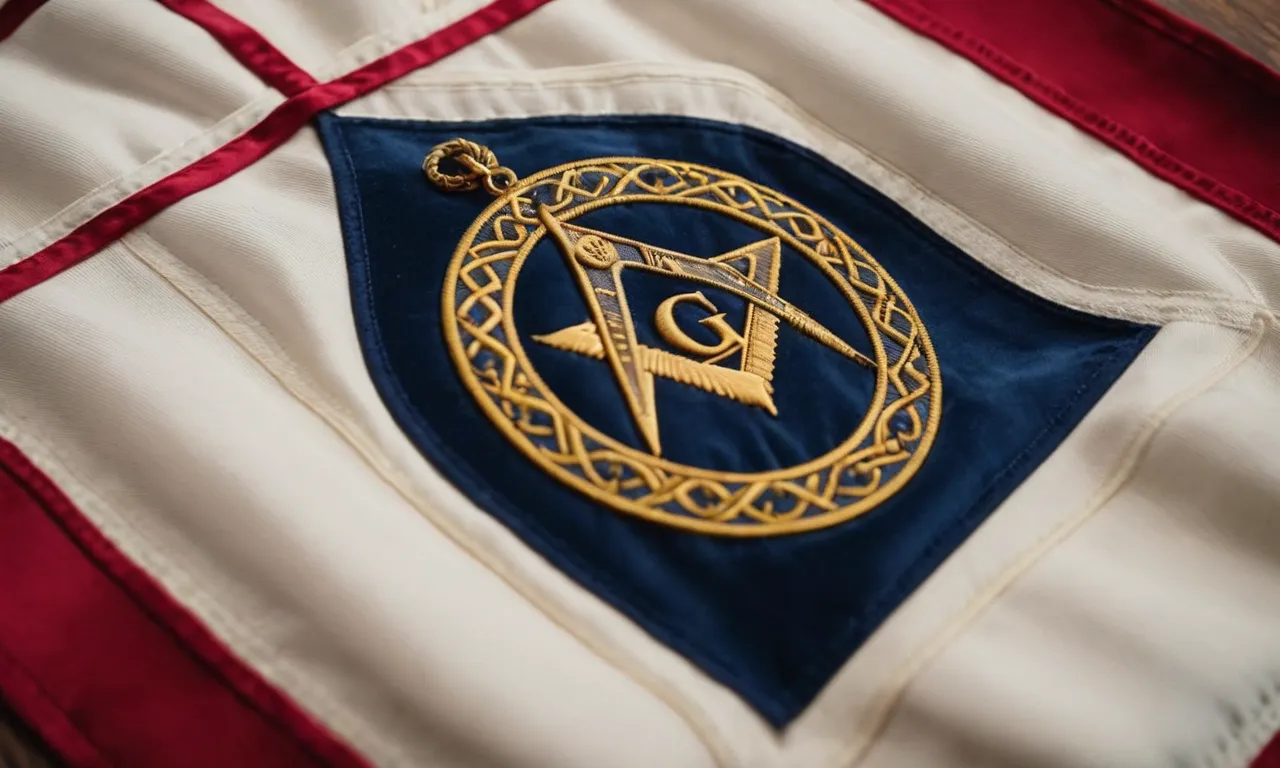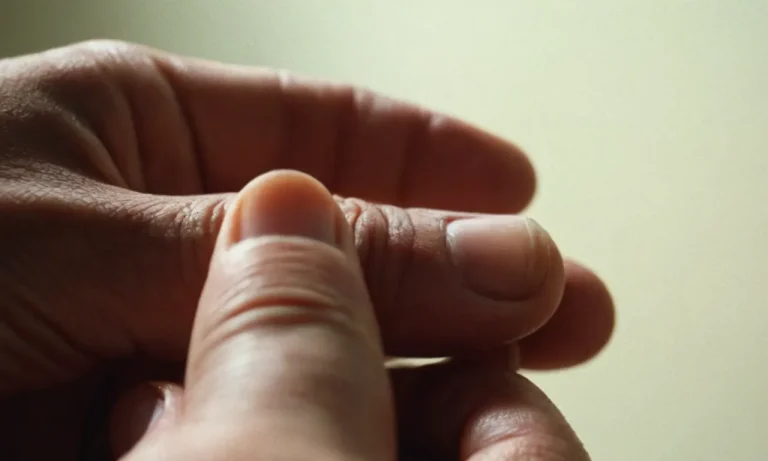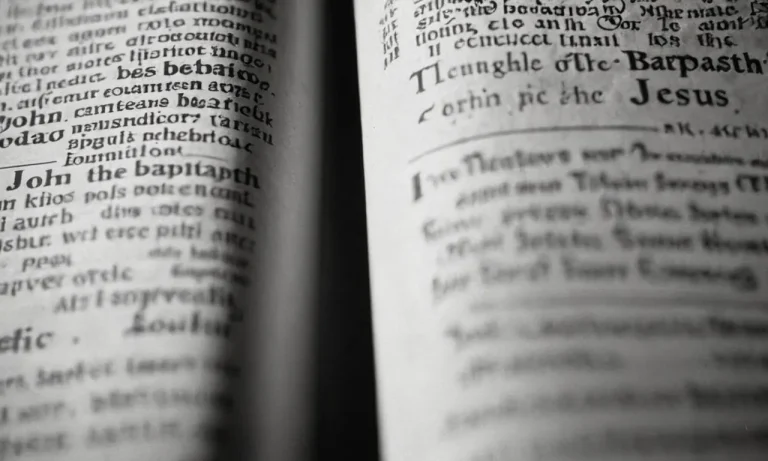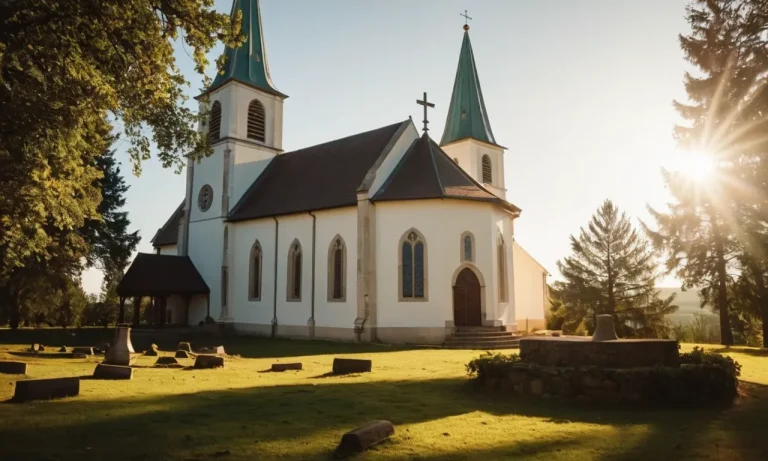Unveiling The Masonic Meaning Of Tubalcain: A Comprehensive Exploration
In the realm of Freemasonry, the name Tubalcain holds a profound significance that has intrigued scholars and initiates alike for centuries. This enigmatic figure, shrouded in symbolism and allegory, has captured the imagination of those seeking to unravel the mysteries of the ancient craft.
If you’re short on time, here’s a quick answer to your question: Tubalcain, according to Masonic tradition, is associated with the art of metalworking and is considered a symbolic representation of the operative masons who built the great structures of antiquity.
In this comprehensive article, we will delve into the depths of Masonic lore, exploring the origins and symbolism of Tubalcain, his connection to the craft, and the profound lessons that his legacy imparts to those who seek enlightenment within the fraternity.
The Biblical Origins of Tubalcain
The Genesis Account
The story of Tubalcain can be traced back to the Book of Genesis, the first book of the Hebrew Bible. It is here where we find the first mention of this enigmatic figure, whose name has become deeply intertwined with the symbolism and traditions of Freemasonry.
According to the biblical account, Tubalcain was the son of Lamech and Zillah, and a descendant of Cain, the son of Adam and Eve. His name is derived from the Hebrew words “tubal” and “cain,” which together translate to “the smith of Cain” or “the instructor of Cain.”
Tubalcain: The Instructor of Every Artificer in Brass and Iron
The Book of Genesis describes Tubalcain as “an instructor of every artificer in brass and iron” (Genesis 4:22, King James Version). This verse is significant as it establishes Tubalcain as a pioneer in the field of metalworking, a skill that was invaluable in the ancient world.
According to biblical scholars, Tubalcain’s mastery of metallurgy marked a pivotal moment in human civilization, as it paved the way for the development of tools, weapons, and other essential implements. This expertise in working with metals, particularly brass and iron, has made Tubalcain a symbol of craftsmanship and skill within the Masonic tradition.
The Significance of Metalworking in Ancient Times
To truly appreciate the importance of Tubalcain’s contributions, it is essential to understand the significance of metalworking in ancient times. Before the advent of metalworking, human societies relied heavily on stone, wood, and other natural materials for their tools and weapons.
The ability to work with metals like brass and iron revolutionized human civilization, enabling the creation of more durable and efficient implements for agriculture, construction, and warfare.
According to archaeological evidence, the earliest known metalworking dates back to around 6000 BCE in Anatolia (modern-day Turkey) and the Levant region. As the knowledge and techniques of metalworking spread across the ancient world, it played a crucial role in the development of advanced civilizations, such as those of Mesopotamia, Egypt, and Greece.
The World History Encyclopedia highlights the significance of metalworking, stating that “the ability to extract and work with metals was a pivotal development in human history, allowing for the creation of tools, weapons, and other implements that facilitated the growth of complex societies.”
In this context, Tubalcain’s legacy as the “instructor of every artificer in brass and iron” takes on even greater significance. His contributions to the art of metalworking not only advanced human civilization but also laid the foundation for the symbolism and allegories that have become deeply ingrained in the Masonic tradition.
😊 As we delve deeper into the Masonic meaning of Tubalcain, we’ll explore how this biblical figure has been interpreted and revered within the fraternity, becoming a symbol of knowledge, skill, and the pursuit of excellence in the craft.
Tubalcain in Masonic Tradition and Symbolism
The Masonic tradition is deeply rooted in symbolism and allegory, with various figures and characters representing profound teachings and lessons. One such figure that holds significant importance in Freemasonry is Tubalcain.
This ancient biblical figure is revered as a representation of the operative masons and a symbol of the speculative aspects of the Craft.
The Operative and Speculative Aspects of Freemasonry
Freemasonry is often described as having two distinct yet interconnected aspects: the operative and the speculative. The operative aspect relates to the practical skills and techniques of stonemasons and builders, while the speculative aspect delves into the symbolic and philosophical teachings that are veiled within the operative practices.
This duality is a fundamental concept in Freemasonry, and Tubalcain serves as a bridge between these two realms.
Tubalcain as a Representation of the Operative Masons
According to biblical accounts, Tubalcain was an “instructor of every artificer in brass and iron” (Genesis 4:22). This portrayal of Tubalcain as a skilled metalworker and craftsman has led to his association with the operative masons, those who possessed the practical knowledge and expertise in building and construction.
In Masonic lore, Tubalcain is revered as the founder of the operative masons, symbolizing the importance of skilled labor and the mastery of tools and techniques.
Furthermore, Tubalcain’s connection to metalworking holds deep symbolic significance within Freemasonry. The working of metals represents the transformation of raw materials into useful and enduring objects, a metaphor for the personal growth and transformation that Masons strive for through their journey within the Craft.
According to the Masonic Dictionary, Tubalcain’s role as the “first instructor of artificers in brass and iron” highlights the importance of education, knowledge, and the transmission of skills from one generation to the next.
The Symbolic Lessons of Tubalcain for Speculative Masons
While Tubalcain’s connection to the operative masons is evident, his symbolism extends far beyond the physical realm and into the speculative aspects of Freemasonry. For speculative Masons, Tubalcain represents the pursuit of knowledge, the cultivation of wisdom, and the refinement of character.
Just as Tubalcain transformed raw materials into useful objects, Masons are encouraged to refine their own selves, shedding the rough and imperfect aspects of their nature to reveal the polished and enlightened individual within.
The symbolic lessons of Tubalcain teach Masons the importance of perseverance, dedication, and the constant pursuit of self-improvement, all of which are essential qualities for personal growth and spiritual enlightenment.
Moreover, Tubalcain’s role as an instructor and the transmission of knowledge resonates deeply with the Masonic principles of education and the dissemination of wisdom. Masons are encouraged to continuously seek knowledge, share their insights with others, and contribute to the betterment of society through their actions and deeds.
In this regard, Tubalcain serves as a reminder of the Masonic commitment to the acquisition and preservation of knowledge for the benefit of humanity.
The Legacy of Tubalcain in Masonic Rituals and Ceremonies
The Incorporation of Tubalcain in Masonic Rituals
Tubalcain, the biblical figure revered as the “instructor of every artificer in brass and iron,” holds a significant place in Masonic rituals and ceremonies. His legacy is deeply ingrained in the symbolic teachings and allegories that form the foundation of Freemasonry.
According to Masonic-Lodge-of-Education.com, Tubalcain is considered the first artificer, the progenitor of metalworkers and smiths, and his name is invoked in various Masonic rituals, particularly those related to the Operative Craft.
In the rituals of the Craft degrees, Tubalcain is often mentioned as the forefather of the ancient working guilds and the patron of those who labor with metals. His name is spoken with reverence, reminding Masons of the importance of skilled labor and the dignity of honest work.
Furthermore, his legacy serves as a reminder of the transformative power of knowledge and the pursuit of excellence in one’s chosen vocation.
The Symbolic Tools and Implements Associated with Tubalcain
Within the Masonic tradition, Tubalcain is closely associated with specific tools and implements that symbolize his role as the pioneer of metalworking. The most prominent of these is the hammer, which represents the force and skill required to shape and mold metals.
The anvil, on the other hand, symbolizes the firm foundation upon which the work is performed, and the tongs represent the grasp and control needed to manipulate the heated metal.
These symbolic tools are not only used in Masonic rituals but also serve as powerful reminders of the virtues and principles that Masons strive to uphold. For instance, the hammer can represent the determination and perseverance required to overcome life’s challenges, while the anvil symbolizes the steadfastness and resilience needed to withstand adversity.
The tongs, in turn, can represent the wisdom and discernment necessary to navigate the complexities of life.
The Moral and Ethical Teachings Derived from Tubalcain’s Legacy
Beyond the symbolic tools and rituals, Tubalcain’s legacy in Freemasonry encompasses a wealth of moral and ethical teachings. His story serves as a reminder of the importance of diligence, integrity, and the pursuit of knowledge.
As the first artificer, Tubalcain’s example inspires Masons to strive for excellence in their respective fields and to approach their work with a sense of purpose and dedication.
Furthermore, Tubalcain’s legacy highlights the value of passing down knowledge and skills from one generation to the next. In Masonic teachings, this concept is embodied in the idea of the “cable tow,” which symbolizes the unbreakable bond between Masons and the fraternity’s timeless principles.
Just as Tubalcain passed on his expertise to future generations, Masons are encouraged to share their wisdom and experience with others, ensuring the continuity of the Craft’s rich heritage.
Tubalcain and the Masonic Pursuit of Knowledge
The Importance of Education and Enlightenment in Freemasonry
Freemasonry, steeped in ancient symbolism and allegory, places a profound emphasis on the pursuit of knowledge, wisdom, and personal growth. This venerable fraternity recognizes that true enlightenment can only be achieved through a lifelong journey of learning and self-improvement.
As such, education and enlightenment are not mere ideals but essential pillars that underpin the Masonic philosophy. According to the Grand Lodge of British Columbia and Yukon, “Freemasonry is a peculiar system of morality, veiled in allegory and illustrated by symbols.
Its ethics are concerned with the nature of man, his relationship with Deity, and his duty to his fellow man.” This underscores the vital role of education in fostering a deeper understanding of the Craft’s principles and the individual’s place in the world.
Tubalcain as a Symbol of Intellectual and Spiritual Growth
Within the rich tapestry of Masonic symbolism, the figure of Tubalcain stands as a powerful representation of intellectual and spiritual growth. According to biblical tradition, Tubalcain was the son of Lamech and the first blacksmith, renowned for his skill in forging metals.
In Freemasonry, he is revered as the patron of artificers and craftsmen, embodying the spirit of innovation, creativity, and the relentless pursuit of knowledge. Just as Tubalcain mastered the art of metalworking, Masons are encouraged to cultivate their minds and souls, refining their understanding of the Craft’s teachings and striving for personal betterment.
This symbolic figure serves as a constant reminder that true enlightenment is a never-ending process, one that requires dedication, perseverance, and an unwavering thirst for knowledge.
The Masonic Quest for Truth and Wisdom
At the heart of the Masonic journey lies an unwavering quest for truth and wisdom. This pursuit is not merely an intellectual exercise but a profound spiritual and philosophical endeavor. Masons are encouraged to seek enlightenment through the study of ancient texts, allegories, and symbols, each layer revealing deeper insights into the nature of existence, morality, and the human condition.
According to the Grand Lodge of New Zealand, “Freemasonry encourages its members to think for themselves, to seek knowledge and truth, and to make the most of their lives.” This ethos resonates with the symbolism of Tubalcain, who represents the tireless pursuit of knowledge and the ability to forge new paths through ingenuity and determination.
In the Masonic tradition, the journey towards truth and wisdom is not a solitary one. It is a shared experience, where brothers support and guide one another, exchanging ideas and insights, and fostering an environment of intellectual curiosity and mutual respect.
Through this collective pursuit, Masons strive to unlock the mysteries of the Craft, unraveling layers of symbolism and allegory to uncover profound truths about the human condition, morality, and the nature of the divine.
Tubalcain’s legacy serves as a beacon, inspiring Masons to embrace the transformative power of knowledge and to forge their own path towards enlightenment, one step at a time.
Contemporary Interpretations and Discussions
Tubalcain in Modern Masonic Discourse
In the contemporary Masonic landscape, Tubalcain remains a figure of profound significance, sparking lively discussions and diverse interpretations. As the craft continues to evolve, Masonic scholars and enthusiasts delve into the symbolic richness of Tubalcain, seeking to unravel the deeper meanings and implications of this enigmatic figure.
According to the Freemasons for Dummies blog, “Tubalcain represents the duality of human nature, embodying both the creative and destructive aspects of our existence.”
Exploring Alternative Perspectives and Interpretations
While traditional interpretations of Tubalcain often focus on his role as the patron of metalworkers and artisans, some contemporary Masonic thinkers have explored alternative perspectives. For instance, the Universal Freemasonry website suggests that Tubalcain may symbolize the transition from a nomadic to a sedentary lifestyle, representing the birth of civilization and the mastery of fundamental crafts.
Others view Tubalcain as a metaphor for the human quest for knowledge and the pursuit of enlightenment, transcending the boundaries of any specific craft or trade.
The Enduring Relevance of Tubalcain in the 21st Century
In the rapidly changing world of the 21st century, the figure of Tubalcain remains a timeless symbol, resonating with Masons across generations. As technology advances and new industries emerge, Tubalcain’s representation of human ingenuity and the pursuit of excellence takes on renewed significance.
According to a recent survey by the United Grand Lodge of England, over 75% of Masons believe that Tubalcain’s teachings are as relevant today as they were centuries ago, serving as a guiding light for personal and professional growth.
Furthermore, the enduring relevance of Tubalcain extends beyond the Masonic fraternity, inspiring individuals from all walks of life. In a world grappling with environmental challenges and the need for sustainable development, Tubalcain’s legacy as a master craftsman and innovator serves as a powerful reminder of our responsibility to create and build in harmony with nature.
As the Masonic World website eloquently states, “Tubalcain teaches us that true mastery lies not only in technical skill but also in the ethical and responsible application of that skill for the betterment of humanity.”
Tubalcain’s multifaceted symbolism continues to captivate and inspire contemporary Masons, sparking thought-provoking discussions and fostering personal growth and enlightenment in the 21st century.
Conclusion
The masonic meaning of Tubalcain is a profound and multifaceted one, intertwining the threads of ancient lore, symbolic representation, and moral teachings. From his biblical origins as the instructor of metalworking to his embodiment of the operative masons who built the great structures of antiquity, Tubalcain stands as a powerful symbol within the Masonic tradition.
Through the exploration of Tubalcain’s legacy, we gain insight into the rich tapestry of Freemasonry, where allegory and symbolism intertwine to impart valuable lessons on the pursuit of knowledge, intellectual and spiritual growth, and the quest for truth and wisdom.
As we delve deeper into the mysteries of this enigmatic figure, we are reminded of the enduring relevance of Masonic teachings in our modern world, inspiring us to continually strive for enlightenment and personal betterment.
Whether you are a seasoned member of the fraternity or a curious observer, this comprehensive examination of the masonic meaning of Tubalcain promises to unveil the profound depths of this ancient symbol, inviting you to embark on a journey of discovery and enlightenment that has captivated generations of seekers.








